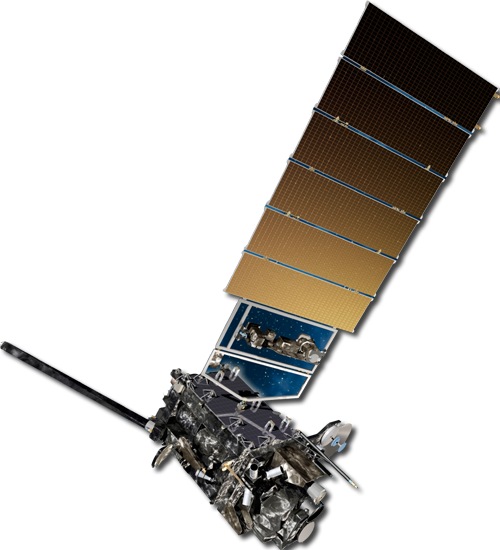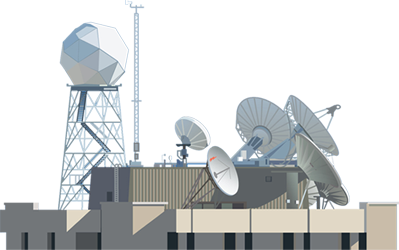10
The GOES-R and JPSS Satellite Era

GOES-R
The instruments on GOES-R will allow for increased spectral, spatial, and temporal resolution, Western Hemisphere real-time lightning detection, real-time solar extreme ultraviolet movies -- improving models of flares, monitoring of low energy ionizing responsible for spacecraft charging, and improved models of the ionosphere. The GOES-R instruments are listed below, but in the following pages, we will focus on the Advanced Baseline Imager (ABI), the Geostationary Lightning Mapper (GLM), and the Solar Ultraviolet imager (SUVI).
GOES-R Instruments
- ABI (Advanced Baseline Imager)
- covers the Earth almost 5 times more quickly than the current GOES
- GLM (Geostationary Lightning Mapper)
- earlier detection of severe weather events, including tornadoes
- SEISS (Space Environmental in-Situ Suite)
- drives the Solar Radiation Storm portion of NOAA's Space Weather Scales
- EXIS (Extreme UV/X-Ray Irradiance Sensor)
- monitors solar flares (and helps predict proton events) that can disrupt communications and degrade navigational accuracy, as well as monitors solar variations that directly affect satellite drag/tracking and ionospheric changes, which impact communication and navigation operations.
- SUVI (Solar UV Imager)
- improved forecasting of space weather and early warnings of possible impacts to the Earth environment.
- Magnetometer
- provides the only operational measure of the impact of geomagnetic storms at
geosynchronous orbit
- provides the only operational measure of the impact of geomagnetic storms at
geosynchronous orbit
| 7 / 12 |





